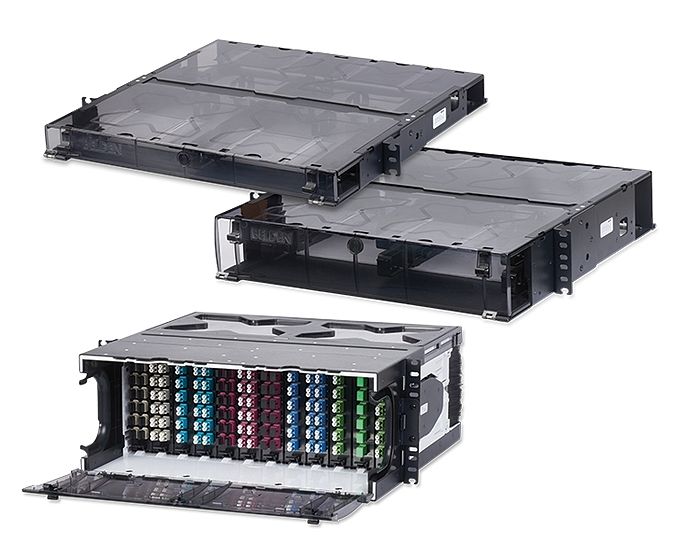Patch Panels for LAN Installation: Flexibility is Crucial
The performance of a smart building – and its many devices that gather and share data – ultimately depends on your fiber network. From in-building wireless to IoT components like cameras and access points, fiber is the backbone upon which a smart building communicates and operates. Fast speeds and data transmission, along with high capacity levels, are key.
To manage incoming and outgoing fiber cables and also connect devices to servers, switches or other pieces of networking hardware, you need a patch panel that will help keep things organized.
In smart buildings, patch panels are especially important for maintaining flexibility. When nearly everything in a smart building is connected to the network, you want to keep fiber connections securely connected to minimize unplanned downtime, make troubleshooting easier and support fast and easy moves, adds and changes to keep up with device connections.
When selecting patch panels for fiber LAN installation, there are a few characteristics you should look for to ensure flexibility.
1. Features that Simplify Installation
Look for patch panels that require only one person to install, which can be a blessing in tight closets where there isn’t a lot of space (having only one person perform the installation may help keep the closet a little cooler, too).
Patch panels that offer front and rear removable cassettes give installers or end-users the ability to enter the rack from either side for easier cable access in tight telecom spaces.
2. The Ability to Support Mixed Media
Patch panels for LAN installations that can manage and host both fiber and copper connections save time, space and money. You may also be able to reduce the number of additional patch panels you need to support cables.
Mixed-media options are especially advantageous in multi-story buildings. On the first floor, for example, you may need to manage and connect fiber that runs to the top floor. But on the third and fourth floors, there may be lots of connected devices like cameras, wireless access points and building management sensors that use copper cables. A mixed-media patch panel for LAN installation can support both in the same system.
3. Easy Cassette and Frame Switchouts
Typically, when you buy a cassette, it comes with extra plastic components that must be clipped into the housing. Look for a patch panel that uses the same footprint for cassettes and frames. This lets you efficiently switch back and forth between the two with no extra pieces needed, making for easier installation as well. If you have to change something down the road, you won’t waste time searching for the extra pieces you’d typically need for a cassette.
4. Simpler Cassette Design for Reduced Pinch Points
Have you ever closed a cassette lid down onto your fiber, breaking it without even realizing it? That’s because there are multiple places inside the cassette where the fiber crosses from back to front or from the middle to the cassette lid. Look for a patch panel with a cassette design that minimizes these pieces to reduce pinch points and breakage.
Bringing These Flexibility Features Together

After hearing first-hand about what worked (and what didn’t) with many other patch panels on the market, Belden had the opportunity to design a patch panel for LAN installations: its FiberExpress (FX) Enterprise Closet X (ECX) Patch Panel.
It includes many options that end-users and installers told us they wanted in their enterprise LAN housing, offers easy accessibility for moves, adds and changes. It also offers features that most other patch panels don’t, including the ability to:
- Remove the front and rear doors
- Remove cassettes from the front or back
- Install the panel while nothing is inside
- Disassemble the panel so you can take it to a different space to work on it
Want to learn more about the FiberExpress Enterprise Closet X (ECX) Patch Panel? Get your questions answered here!
